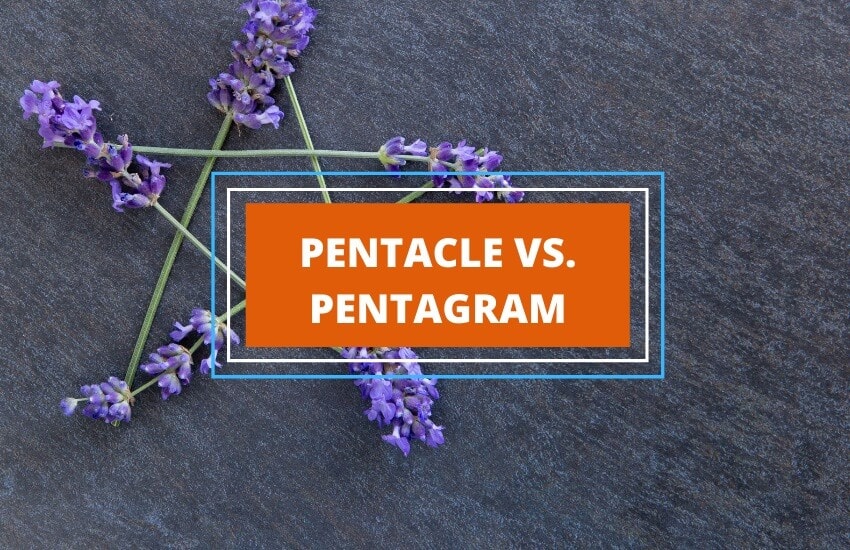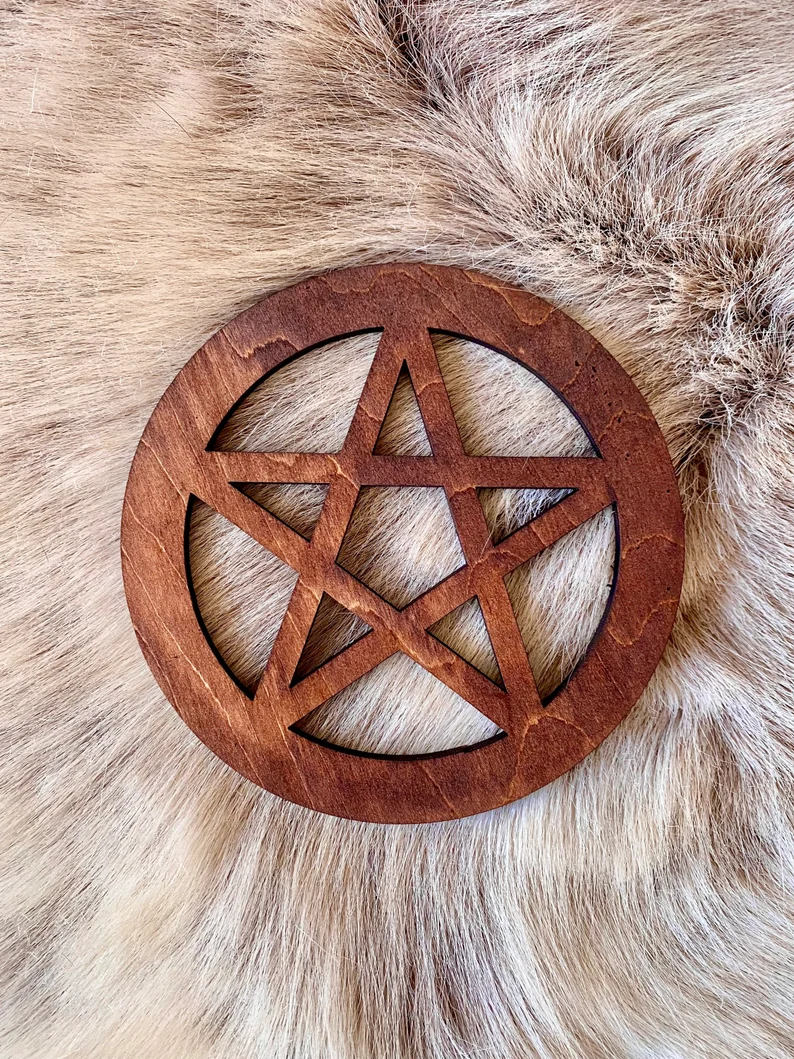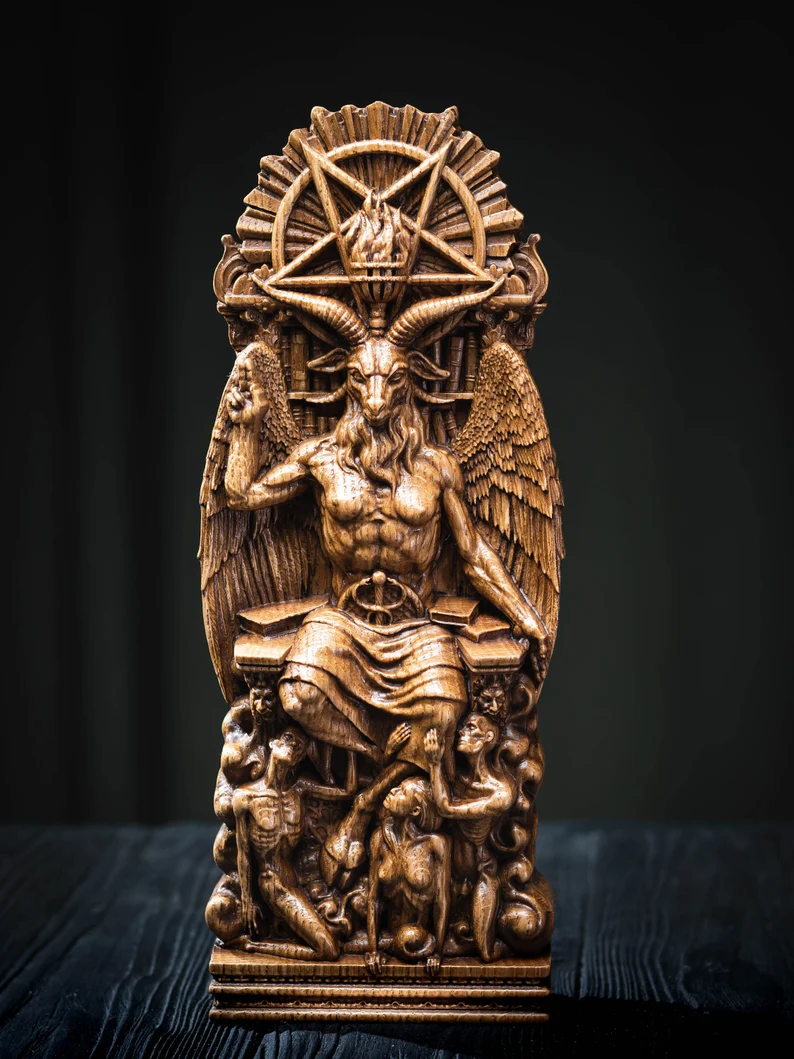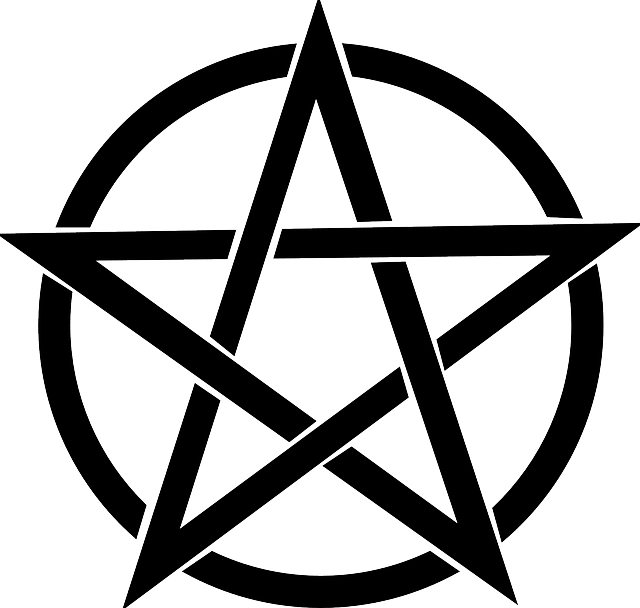
Table of Contents
The terms pentacle and pentagram are often used interchangeably, but these terms don’t refer to the same symbol. While both pentacles and pentagrams are used in similar contexts, there are some fundamental distinctions between the two same. Let’s take a closer look at the similarities and differences of these two occult symbols.
What is a Pentacle?
Etymologically, pentacles refer to any symbol that contains five points. It comes from the Latin word pentaculum, with the prefix penta- which means five, and -culum, which translates to instrumentality. When represented graphically, the pentacle is drawn as a five-pointed star within a circle.

For ancient Pagans, the pentacle represented the harmony of all five elements. The five points of the star signify the elements of air, water, fire, earth, and spirit. These points are joined together by the outer circle, which represents the harmony and balance created when they work in unity.
In Christianity, the pentacle is regarded as a protective symbol that keeps evil at bay. This is because the five-pointed star represents Jesus himself, with the five points representing his five crucifixion wounds.
How Did the Pentacle Become Associated with Evil

Historical records indicate that Éliphas Lévi, a renowned French occult author and ceremonial magician, played a key role in popularizing the interpretation of the inverted pentacle as a symbol of dark forces. Lévi proposed that an inverted pentagram, with two points facing upwards, alluded to a satanic image. While negative associations with the pentacle predate Lévi, his writings significantly spread these views in the Western world.
This interpretation was later integrated into pop culture, with the inverted pentacle often portrayed as an emblem of evil and demonic influences. Further contributing to this perception was the Church of Satan’s choice of symbol: the Sigil of Baphomet. This symbol consists of an inverted pentacle with a goat’s head inscribed in it.
Contrary to what the name may suggest, the Church of Satan does not literally worship Satan. Instead, Satan is symbolically embraced as an embodiment of individualism, personal freedom, and independence.
What is a Pentagram?

Now, let’s take a look at the pentagram. This is a five-pointed star drawn in one continuous line, in such a way that there’s no telling where it begins and where it ends. The pentagram is one of the oldest symbols used by humans, with the first recorded carving found to be over 5,000 years old. As such, no one country, religion, or culture can claim to own this symbol. Over different cultures, though, the pentagram was known as an apotropaic symbol, which means it was seen as a protective symbol.
Ancient Greeks likewise used the pentagram as an illustration of the golden ratio and it was highly regarded as the symbol of perfection.
Negative Connotations of the Pentagram
It was German polymath and occult writer Heinrich Cornelious Agrippa who perpetuated the use of pentagram in magic. In his influential work “De Occulta Philosophia Libri Tres” (Three Books of Occult Philosophy), Agrippa discussed the symbolism of the pentagram.
Much like the pentacle earlier discussed, Agrippa claimed that the five points in a pentagram referred to the five elements, with the spirit being the topmost point, lording over the four physical elements of fire, air, water, and earth. Therefore, a reversed pentagram is a physical representation of the overturning of the proper order of things, in such a way that the spirit descends to the will of physical matter, resulting in perversion and evil.
Pentacle vs. Pentagram

The only physical difference between these two symbols is that one is encircled while the other isn’t. The circle in the pentacle can symbolize unity, wholeness, infinity, the goddess, and protection. By enclosing the star, the circle can be seen to “contain” and control the elements, symbolizing unity and harmonious interaction between the elements.
In some traditions, the pentacle (with the enclosing circle) may have been seen as offering a higher form of protection than the pentagram. This is because aside from the presence of all five elements, it signified the harmony and balance between the five.
In modern-day occultism, both the pentacle and pentagram are important symbols and can be used in a variety of ways, depending on the specific beliefs and practices of the group or individual. An inverted pentacle or pentagram can be associated with a variety of concepts, from the inversion of traditional spiritual hierarchy, as discussed earlier, to symbolizing the second-degree initiation in the tradition of Wicca.
Wrapping Up
The history of the pentacle and the pentagram in their symbolic sense speak of the nature of signs and symbols, demonstrating how definitions and meanings change over time. It is safe to assume that a few years or decades down the road, pentacles and pentagrams might have a widely different connotation than what we know today. Whether they would regain their noble origins as protectors of the spirit or if they will acquire brand new meanings in the future remains to be seen.
Related articles
The Power of Triangles: What’s the Spiritual Significance of Triangle Symbols?
Popular Alchemy Symbols and Their Meanings
23 Popular Celtic Symbols and Their Meanings
16 Most Popular Native American Symbols with Meaning
20 Popular Mayan Symbols and What They Symbolize
Top 10 Aztec Symbols and Their Meanings








